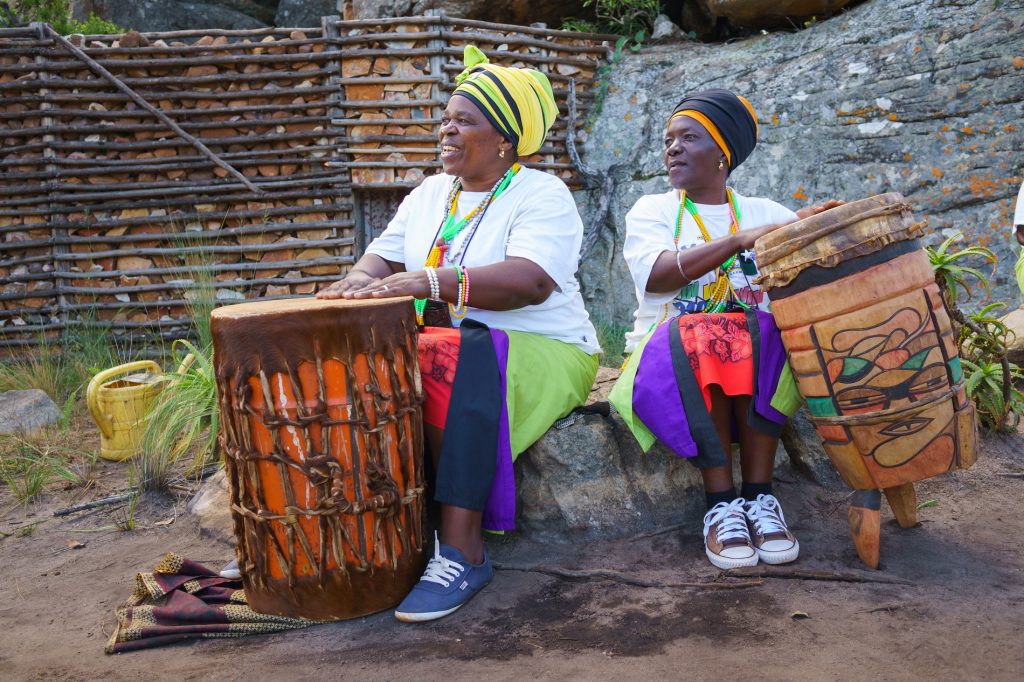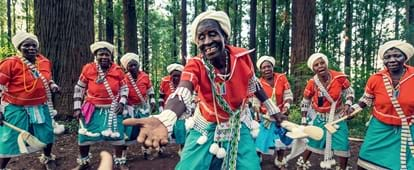All about South African Culture Today
All about South African Culture Today
Blog Article
The Main Principles Of South African Culture Today
Table of ContentsNot known Facts About South African Culture TodayThe smart Trick of South African Culture Today That Nobody is Talking AboutThe 2-Minute Rule for South African Culture TodayGet This Report on South African Culture TodayThe Facts About South African Culture Today RevealedSouth African Culture Today for Beginners
A matter of value in Zambian towns is the passing away of liked ones. All members of the town placed cash, time and effort together for the interment of the deceased.Music and dance is a very vital facet of the Zambian society. The numerous tribal systems have their very own dance types; however, makishi is common amongst all people.
South African Culture Today - Questions
When it concerns songs, drums are utilized one of the most, with a range of drumming events. In Zambia, majority of individuals are Christian; Protestant and Roman Catholic. There are small groups of Muslims and Hindus, with the rest complying with neighborhood native tribal ideas.

South African heritage and society is exceptionally varied, and is composed of several teams of individuals that each have their very own practices and beliefs. Having such a diversity of individuals and cultures is what makes South Africa so unique. In the real sense of the phrase, we are a rainbow country.
South Africa has around 3 hundred thousand Portuguese people living in it. Making it the 7th on the listing of countries with one of the most Portuguese individuals in it beyond Portugal. Portuguese is not just a society, yet it is likewise a language and a citizenship. Portuguese people originate from the nation of Portugal in Europe, nonetheless, as a result of Portugal (like several various other countries in Europe) exploring the world and overcoming various other countries during the 15th 20th centuries, South Africa has what we call Portuguese South African's living in it.
Some Known Facts About South African Culture Today.
Among the popular features of the topography is a plateau that covers nearly two thirds of the center of the nation. The plateau complex climbs toward the southeast, where it culminates in the Drakensberg range, part of a cliff that separates the plateau from the seaside areas. The Drakensburg consists of Sparkling wine Castle, the greatest optimal in the nation.
The region north of the Witwatersrand, called the bushveld, slopes downward from eastern to west toward the Limpopo River, which creates the international boundary. The western area of the plateau, the middleveld, also comes down in the direction of the west and varies in altitude in between the highveld and bushveld. Between the Drakensburg and the eastern and southerly coastline, the land comes down to the sea.
Nearer the coastline there is a low-lying plain called the eastern lowveld. Southwest of the plateau the nation becomes considerably much more dry, paving the way to the stony desert of the Great Karroo, approached the east by the reduced, better sprinkled plateau of the Little Karroo. Dividing the dry southern inside from the sandy littoral of the southerly coastline and West Cape is an additional range, the Langeberg.
The Single Strategy To Use For South African Culture Today
The nation's racially, ethnically, and politically divided history has actually generated nationwide and subnational icons that still operate as signs of the nation, and others signs that are approved only by certain groups. The monoliths to white inhabitant occupation and political prominence, such as the Afrikaner Voortrekker ("leader") Monument in Pretoria and the Rhodes Monument recognizing the British colonial realm building contractor and Cape prime minister Cecil Rhodes, continue to be sectarian icons.
The very first modern-day citizens were the San ("bushman") hunter-gatherers and the Khoi ("Hottentot") individuals, that herded animals (South African culture today). The San may have been present for countless years and left evidence of their presence in thousands of ancient cavern paintings ("rock art"). Bantu-speaking clans that were the ancestors of the Nguni (today's amaZulu, amaXhosa, amaSwazi, and vaTsonga individuals) and Tswana-Sotho language groups (today's Batswana and Southern and Northern Basotho) moved below eastern Africa as very early as the fifteenth century

Both former republics of the Orange Free State and Transvaal (South African Republic) were developed by Afrikaner settlers who beat Learn More and dispossessed the Basotho and Batswana. Lesotho would certainly have been forcibly integrated right into the Orange Free State without the extension of British security in 1869. The best unification of the country arised from the South African Battle (18991902) between the British and both Afrikaner republics, which minimized the country to spoil at the start of the twentieth century.
Afrikaners historically considered themselves the only real South Africans and, while giving complete citizenship to all homeowners of European descent, denied that condition to individuals of shade until the democratic shift of 1994. British South Africans maintain a feeling of cultural and social connection to Great Britain without damaging their identity as South Africans.
The smart Trick of South African Culture Today That Nobody is Talking About
The diversity and fragmentation within ethnic groups and the balance of tensions in between those teams throughout the twentieth century prevented interethnic civil conflict. While intergroup stress over see here now sources, privileges, and political prominence continue to be, those disputes are as likely to pit Zulu versus Zulu as Zulu versus Xhosa or African against Afrikaner.
From colonial India, British sellers and administrators brought the curved steel ornamental roofings and slim lace work pillars that still typify the outdoor patios of homes arounds and cities throughout the nation. Holy places add a crucial architectural facet also in the smallest towns. In addition to the rising steeples and traditional stonework of Afrikaans Dutch Reformed churches, Anglican churches, synagogues, mosques, and Hindu Website shrines provide selection to the spiritual architectural scene.

Butchering and the developing of standard grain beer are vital in safeguarding the involvement and a good reputation of the ancestors that are thought about the guardians of good lot of money, success, and well-being. Indian neighborhoods keep their indigenous culinary customs and use them on Islamic and Hindu routine and ritualistic occasions. Afrikaners and Coloured people gather at weekend breaks and unique celebrations at multifamily barbecues called braais, where community bonds are enhanced.
Due to the fact that this was the primary economic enterprise of both black Africans and white colonists, conflict in between those groups fixated the property of grazing land and livestock. In 1867, the largest diamond deposits on the planet were found at Kimberley in the west main location. The wide range from those areas aided fund the exploitation of the best gold coral reef on the planet, which was discovered on the Witwatersrand in 1886.
The 4-Minute Rule for South African Culture Today
This caused misconceptions and calculated misstatement in the negotiations of white settlers and government authorities with African principals during the colonial duration (South African culture today). In the facility of African books, some elements of common and primarily "tribal trust" land tenure were preserved, and also in white backwoods, kinds of public tenure were still practiced in locations with African neighborhoods
After the democratic transformation of 1994, programs for land restitution, redistribution, and reform were set up, however progress has actually been sluggish. The white minority still controls eighty percent of the land. Following agricultural land invasions in Zimbabwe, the Division of Land Affairs has actually promised to speed land redistribution.
Report this page